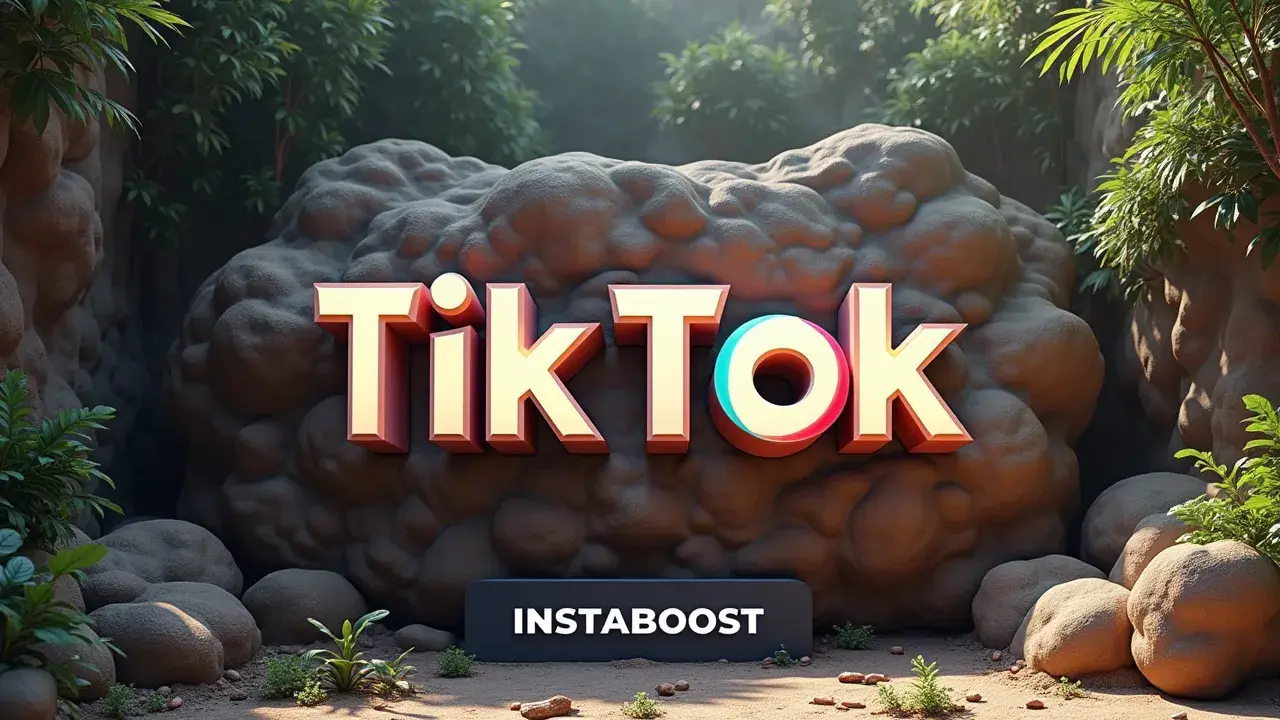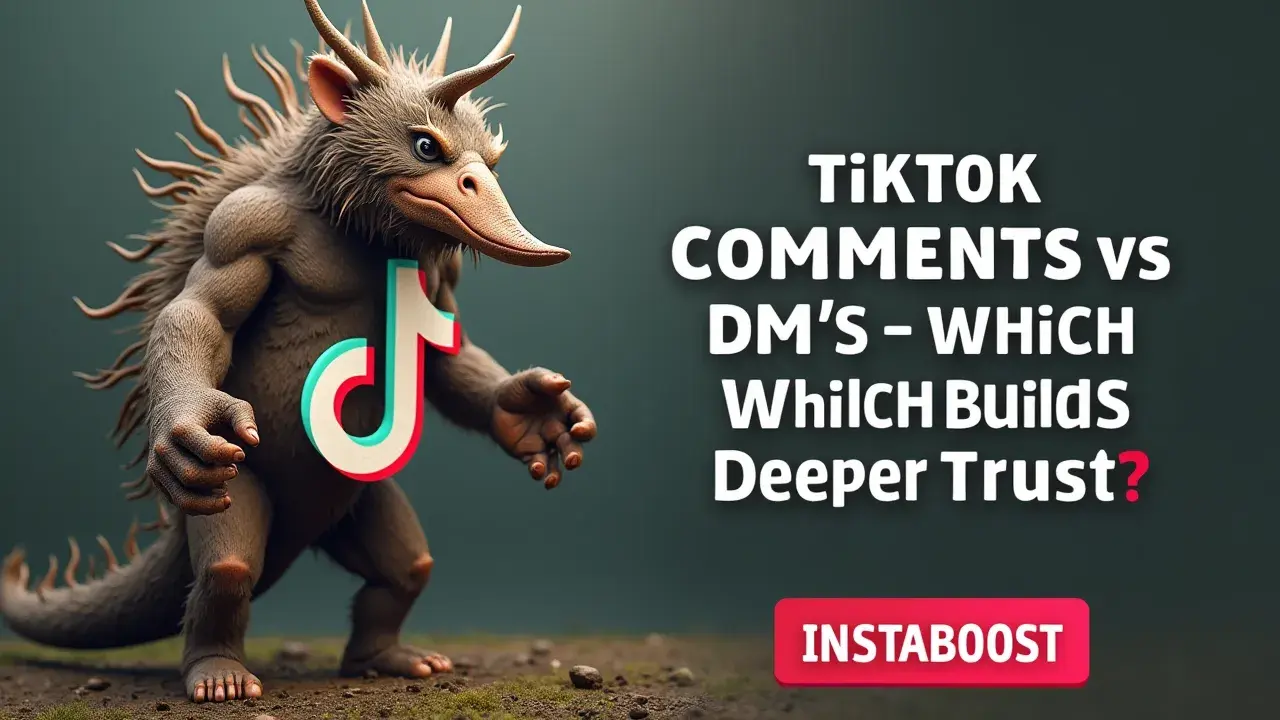TikTok Comments vs DMs – Which Builds Deeper Trust?
Public comments foster visible dialogue that signals openness and social proof, building broad trust through community interaction. Direct messages enable private, nuanced exchanges that can address specific needs and deepen individual relationships. The choice depends on whether the goal is scalable credibility or personalized rapport, as each channel aligns with different audience expectations and levels of intimacy. A smart path blends public responsiveness with selective, thoughtful DM follow-ups to reinforce trust at both levels.
Public vs. Private: The Two Sides of TikTok Trust
How we talk to each other on TikTok – whether it’s in the comment section or through private messages – really shapes the relationships that form between people and creators. Comments are public, fast, and crowded, which means you get lots of jokes and reactions, people piling on to trends, and sometimes you can feel the energy of a whole group. It’s not hard to join in, and that can help you feel included, but at the same time, everyone knows they have an audience, so it’s not always clear who’s being sincere.
DMs are different. When you send someone a direct message, it’s private, just between the two of you, and it feels more direct – there’s less pressure to perform. People can say things there they might not risk in front of everyone else.
But privacy brings its own problems, since creators often get flooded with messages and most of them won’t ever get a reply. So it’s not really about which place gets more activity, but more about where real trust can actually happen, the kind that lasts longer than whatever meme is big that week.
If you’re trying to build a steady connection with people who follow you, paying attention to how these conversations work is important. I’ve noticed that things like subtitles and captions make it easier for people to find you, to boost your TikTok profile just by being visible in the right moment, and it feels like the real challenge is figuring out which interactions matter, and how to make those moments count, even if it’s never going to be perfect.
If you’re trying to build a steady connection with people who follow you, paying attention to how these conversations work is important. I’ve noticed that things like subtitles and captions make it easier for people to find you, to boost your TikTok profile just by being visible in the right moment, and it feels like the real challenge is figuring out which interactions matter, and how to make those moments count, even if it’s never going to be perfect.

Signal vs. Noise: Why the Right Feedback Trumps the Loudest Crowd
Most of the time, you don’t really need more voices chiming in with surface-level takes – you need feedback that actually helps you understand what you’re doing well or what could be better. If you look at the way comments work on TikTok, for example, you can post a video and get a flood of reactions almost immediately: there are likes, one-line replies, people dropping memes, all kinds of quick responses. At first, it might feel reassuring – like all this attention means your ideas are landing.
But a lot of that back-and-forth isn’t really about you. People often perform for the crowd, echoing popular jokes or jumping on trends, and they know other people are watching them. It’s not always the place for real honesty. In contrast, when someone reaches out privately, like sending a DM, it means they’re willing to slow down and be specific. They’re not looking for an audience. They might have a genuine question, or maybe they want to share something about themselves that relates to what you made.
Those conversations feel different: the feedback is more direct, the reactions less filtered. You get to see what actually resonated, or what someone found confusing – sometimes it’s a story from their own life, sometimes it’s something you hadn’t considered. And it’s funny how, even if you’ve found your audience through some trusted tiktok follower source, it’s these private exchanges that start to matter more than the flood of public comments, because they’re where real relationships start to form. Loyalty, if it’s going to last, seems to grow in these quieter moments, where there’s room to talk about what’s actually important. The number of people might be smaller, but the connection feels steadier, like it’s built to last longer than whatever is trending that day.
Strategic Trust-Building: Aligning Approach With Intent
Doing something only because you’re supposed to doesn’t go far – especially on TikTok. Figuring out whether to interact in the comments or move to direct messages is more important than it seems. It’s not only about what’s convenient; it actually shapes how people see you and whether they trust you. If you want your presence to feel open and inviting, making time for public conversations in the comments helps. People often scroll through comments to get a sense of the mood, and seeing the creator respond can make everything feel more accessible. Funny how even the little things, like likes to boost video appeal, can shift the atmosphere and draw more eyes to those conversations.
But if you’re hoping for stronger ties – people who stick around and actually care – you need to go deeper than quick replies. The people who do this well usually start by being active and friendly in the comments, but they pay attention to who really wants to talk. When something feels genuine or someone asks a thoughtful question, that’s when it makes sense to move to DMs and have a quieter, more direct conversation.
There you can give real answers or feedback, and actually get to know the other person a bit. There isn’t one formula for how to do this, but finding a balance helps: be open in public, and when you spot a real possibility for connection, take it private. Sometimes, that’s the difference between someone who’s just gathering views and someone who’s actually building a place where people stick around. It’s not really a trick. It’s more like paying attention to what matters and letting it lead you a little further.
When “Engagement” Masks Stagnation
People talk a lot about “growth,” but honestly, most days it feels more like you’re stuck in place. On TikTok, when you see a rush of comments on something you’ve posted, it can look like you’re building something real, but more people talking doesn’t automatically mean you’re connecting any better. When a video takes off, the comments usually end up being a mix of quick jokes, repeated opinions, or simple compliments. There aren’t many that actually stop to talk about what’s underneath. Trust doesn’t really come from that. The way the platform works, it wants activity and numbers, not careful conversations, so it’s easy to get caught up in chasing responses rather than thinking about whether you’re actually reaching anyone.
Sometimes you catch yourself checking tiktok reels views just to see if things are moving, but that’s not the same as building trust. Trust isn’t about being everywhere or having your name pop up all the time. It’s usually quieter – someone sending a message, asking a real question, or even disagreeing with you in a way that makes sense. That sort of thing happens in DMs, away from the crowd. That’s where you start to feel like you’re actually talking to someone, and they’re actually listening. If you’re only watching your comment count, it’s easy to mistake all that noise for something that matters.
The public comments remind me of being in a busy hallway between classes – lots of people passing by, but nobody really stopping to talk. If the goal is to build trust or community that lasts, you kind of have to look past the easy numbers. The real work is finding the people who care enough to reach out on their own, and sitting with those smaller, quieter conversations for a while.
Beyond Algorithms: Trust That Outlasts the Platform
You don’t actually need someone else to sign off on your next move. There’s a lot of pressure to wait for some hint from the TikTok algorithm or to chase engagement by doing what everyone else is doing, but that isn’t where the good stuff happens. What matters more is paying attention to where you put your energy and how you connect with people. Public comment threads can feel exciting, especially when lots of people are involved, but after a while, you get a sense for when it’s time to bring a conversation somewhere quieter, like DMs.
It’s not really about hiding, but about making space for an actual back-and-forth, where you can talk without worrying about who’s watching or keeping score. Public comments are fine for getting noticed, and even things like buy TikTok reposts safely have their place in that whole cycle, but it’s hard to get into real details or have an ongoing conversation when everyone’s dropping in with one-liners. In private messages, you can explain what you mean, ask questions, and actually hear from the other person, instead of performing for a crowd. Over time, these conversations turn into something more steady – people come back, remember you, and you get a sense for who you can count on.
If you want to build something that lasts, it helps to notice when a public chat has run its course and be willing to follow up in a more personal way. There isn’t really a shortcut for that, and it doesn’t depend on what everyone else is paying attention to. It’s just about finding the right moment to take things off the main stage and see what can grow from there.
Measuring Real Connection: The Subtle Signals That Matter Most
When you scroll through TikTok, it’s easy to see comments and DMs as proof that people are paying attention, but it’s not really the number of replies or messages that builds trust. Public comments are noisy and full of activity – people swapping jokes, making light references, or hoping someone notices them. That back-and-forth can be fun, and it does make things feel alive, but most of it doesn’t go very deep.
People are often looking for a quick reaction, not a real conversation. Trust starts to look different once you’re in the DMs. Messages slow everything down. That’s where someone might admit they don’t understand something, ask a serious question, or share why a video meant something to them – things they’d probably never say in front of everyone else. In DMs, people aren’t trying to keep up with a crowd, so it feels a little more real. If you want to know who’s actually invested, it’s the ones who step out of the comments and into your inbox.
Comments can help you figure out what people like or what’s catching on – even if you sometimes wonder how many people buy likes + views + shares just to boost that impression – but it’s the private conversations that show who’s actually willing to connect. Most of what matters happens there, away from all the noise.















